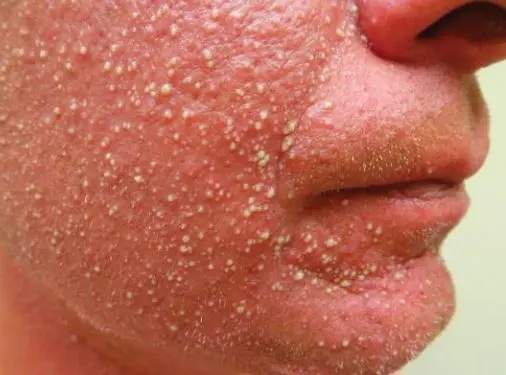What Does Mpox Look Like? The Mpox virus is a type of orthopoxvirus that is closely linked to smallpox. While Mpox is associated with smallpox, which is caused by the variola virus, it typically results in milder symptoms and fatalities are quite uncommon. Importantly, neither Mpox nor smallpox are connected to chickenpox, which arises from an altogether different virus known as varicella-zoster. Chickenpox, smallpox and Mpox all present with rash-like features, yet they derive from separate pathogens and do not relate to one another in terms of source or pathophysiology. The clarification of these distinctions is worthwhile considering ongoing Mpox outbreaks and the resemblance it super
Viral diseases stemming from poxviruses tend to result in lesions, skin nodules, or rashes developing on the skin. Poxvirus infections commonly cause visible bumps or marks to surface across the patient’s epidermis as the viruses multiply beneath the skin’s surface. Through microscopic examination
In Mpox, the lesions can morph or change throughout the course of an individual’s infection. Typically, an individual will develop sores that go through five distinct developmental stages. Initially, the sores may appear as small red bumps that develop into raised blisters filled with clear fluid. As time passes, the blisters will fill with pus and become umbilicated or depressed in the center. The sores will then scab.
What Does Mpox Look Like? A Brief Explanation
Mpox looks like small spots on the skin. They start flat and colored, then they get bumpy, turn into little bubbles, and finally become hard with a cover. These changes show it’s Mpox. In this article all the 5 stages of Monkeypox including with images will cover.
Stages and Mpox (Monkeypox) Pictures

| Stage | Type of Lesion |
| 1 | Macules |
| 2 | Papules |
| 3 | Vesicles |
| 4 | Pustules |
| 5 | Scabs |
Read More: Monkeypox Vaccine Side Effects: What, When, and Why Seek Help
Stage 1: Macules
In the first stage of Mpox, which is a sickness, there are spots on the skin that look different in color. These spots are called macules. They are flat and don’t stick out from the skin. It’s the beginning part of Mpox when someone gets sick.
Stage 2: Papules


In the next stage of Mpox, called papules, the spots on the skin become raised and feel like little lumps. They’re still there from the sickness, but now they’re a bit bumpy instead of being flat.
Read More: Curious about what Mpox looks like? Explore our detailed guide on Monkeypox Pictures to visually understand the appearance of the disease, especially if you’re concerned about potential symptoms after learning about the Monkeypox Vaccine Side Effects.
Stage 3: Vesicles

After the bumpy spots, called papules, the sickness makes them fill up with clear liquid. This makes them look like small blisters. These blisters can stay this way for about two days. It’s a part of Mpox when the spots change and look like little bubbles on the skin.
Stage 4: Pustules


After the blisters, they change again and become hard. They’re called pustules now. These pustules are round and feel tough when you touch them. Later, they might get a little dent in the middle. This stage lasts about 5 to 7 days before the spots start to dry and get crusty.
Scabs Stage 5

After the hard spots, called pustules, they start to dry out. This makes them become scabs. Scabs are like a hard cover on the skin. They form when the spots are almost healed. It’s a sign that the sickness is going away.
Where Do Mpox (Monkeypox) Lesions Appear?
Mpox spots can appear on different parts of the body. They might show up on the face, arms, legs, and sometimes on the tummy or back. They can appear almost anywhere on the skin.
When To Reach Out To a Healthcare Provider?
It’s important to talk to a healthcare provider:
- If you see any signs of Mpox, like spots on the skin.
- If someone feels sick with a fever, headache, or body ache.
- If you’re worried or not sure about any changes in your body after being around someone with Mpox.
- Experience diarrhea, nausea, and vomiting.
Conclusion
Mpox is a sickness that makes spots on your skin. These spots can change and get scabs. They might show up on your chest, hands, or feet. Sometimes, it’s tricky to know if it’s Mpox because it can look like other sicknesses. If you feel strange or see weird spots, it’s good to see a doctor to find out what it is and get help.

